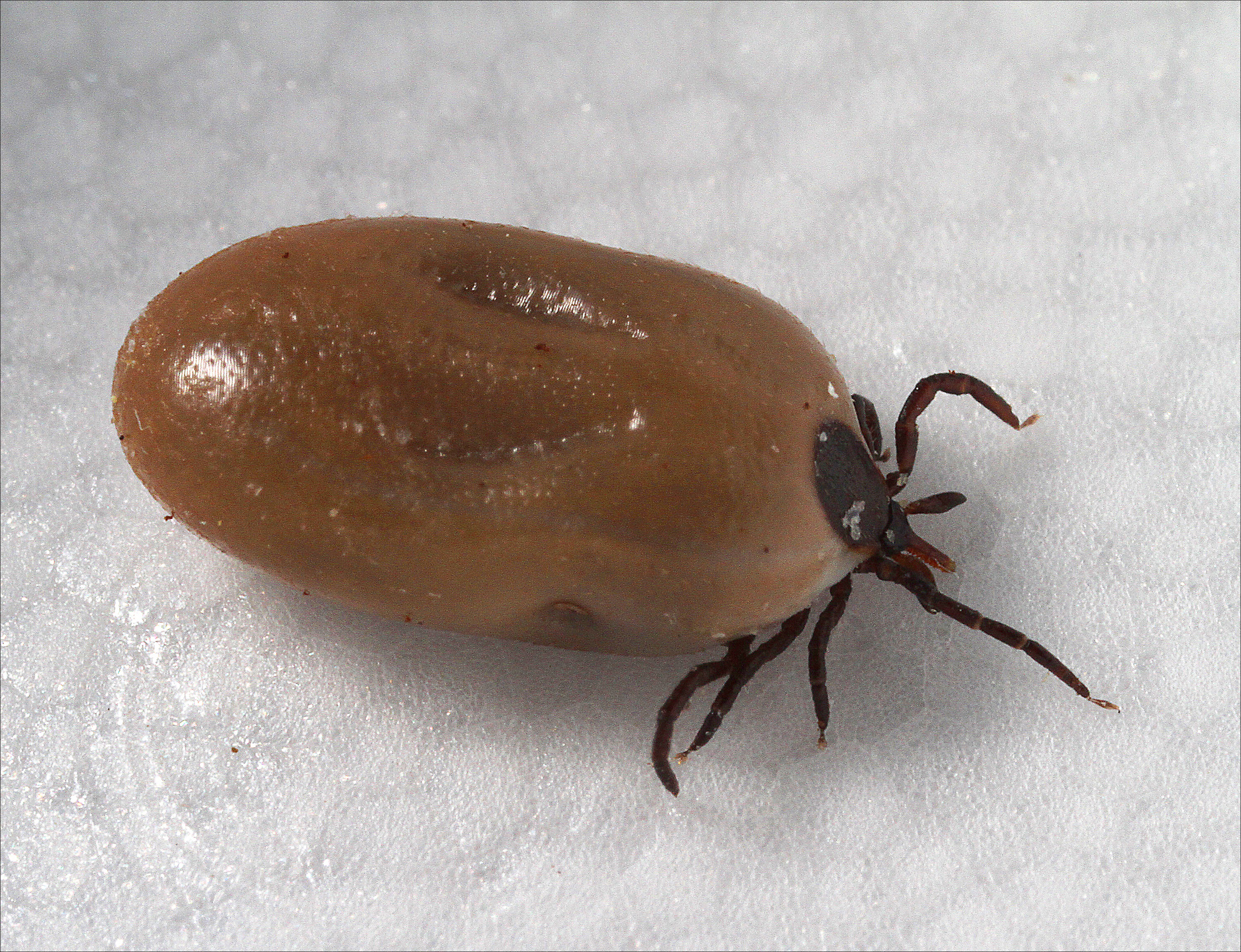Maine woman dies of rare deer tick virus
A Maine woman died of encephalitis caused by Powassan virus, a rare tickborne disease that is on the rise in parts of the country, physicians and researchers said.
The woman was bitten by two ticks in the month leading up to her hospitalization, Robert P. Smith, MD, MPH, director of the division of infectious diseases at Maine Medical Center in Portland, and colleagues wrote in Clinical Infectious Diseases. She was infected with a subtype of Powassan virus known as deer tick virus (DTV), an uncommon cause of encephalitis in North America, according to Smith and colleagues.
Their report did not state when the case occurred, but online news reports indicate the woman was infected and died in 2013. According to Smith and colleagues, her condition deteriorated rapidly after she was admitted to the hospital and she died within weeks.
About 75 cases of Powassan virus have been reported in the United States over the past 10 years, mostly in the Northeast and Great Lakes region, according to the CDC. These are also the areas of the U.S. where Lyme disease is most common. Unlike Lyme disease, however, there is no specific treatment for Powassan virus. Some infected patients may require hospitalization for serious complications, including encephalitis and meningitis.
The virus can be transmitted to humans in as little as 15 minutes after a bite from an infected tick, according to a study published this year that detailed the first case of Powassan virus disease in Connecticut. Smith said physicians in areas where Powassan virus has been reported — and others where deer ticks and the infections they transmit are endemic — should consider it as a potential cause of viral encephalitis.

“For epidemiologic purposes, it would be useful to include Powassan virus antibody testing in arboviral panels in these areas, though secondary testing may be required in suspected positives due to cross-reacting antibodies,” Smith told Infectious Disease News.
Two subtypes
According to the report, two distinct — but serologically indistinguishable — variants of Powassan virus are recognized in North America, each with different primary tick vectors, including deer tick virus. The other variant is primarily transmitted by the woodchuck tick.
According to Smith, fewer than a dozen cases of Powassan virus encephalitis have been reported in Maine since 2000. In their report, Smith and colleagues note the infrequency of contact between humans and woodchuck ticks, which live in the nests or burrows of medium-sized mammals.
But Smith said woodchuck ticks have been documented feeding on humans in Maine, an observation not seen in surveys conducted in areas south of the state. He said woodchuck ticks were once assumed to be the cause of Powassan virus encephalitis in Maine.
“However, given the much higher exposure of humans to deer ticks, we are assuming that the more recent cases are due to the deer tick virus variant,” Smith said.
Fifth documented case
According to Smith and colleagues, the first case of encephalitis caused by Powassan virus was recorded in Ontario, Canada, in 1958. The incidence of these cases increased from 0.7 per year between 1958 and 1998 to 1.3 per year between 1999 and 2005, possibly because of increased surveillance for flavivirus-induced encephalitis spurred by the arrival of West Nile virus in 1999 but also potentially related to the emergence of DTV caused by the expanded range of deer ticks, Smith and colleagues said.
According to their report, the Maine patient was just the fifth documented case of Powassan virus encephalitis attributed to DTV in the U.S. The woman, aged 72 years, was bitten by two ticks before her hospitalization, including a deer tick she removed herself from her left breast a month earlier, after which she was prescribed a prophylactic dose of doxycycline, which is used to treat Lyme disease.
A week before she was admitted to the hospital, she had another tick removed in the ED. Four days later, she again went to the ED, this time with symptoms of Lyme disease, and was prescribed a 2-week course of doxycycline. She was admitted the following day because of a fever and altered mental status. She was continued on doxycycline and initiated on IV ceftriaxone.
Within 24 hours after being admitted, she was transferred to the ICU because of hemodynamic instability and experienced visual hallucinations and confusion, according to Smith and colleagues. After 5 more days, she was transferred to a tertiary facility and intubated for airway management, Smith and colleagues reported. She was administered vancomycin, piperacillin-tazobactam, doxycycline and acyclovir, they said.
“By day 10 after transfer, the patient had no spontaneous movements of her extremities and did not respond to tactile or painful stimuli upon lightening of sedation,” they wrote. “Pupils were equal and weakly reactive. She exhibited roving disconjugate eye movements, trace corneal reflexes bilaterally, positive oculocephalic reflex, and flaccid tetraplegia with reduced tone.”
Smith and colleagues noted other neurologic symptoms of illness and said the woman died after care was withdrawn following “no significant neurological recovery.” They said DTV may pose an increasing threat to the public as deer tick populations increase and expand geographically.
“[Between 1% and 5% of] Ixodes scapularis ticks are infected with [Powassan virus] in most areas of the northeast United States where studies have been done. Although [the virus] may be transmitted within 15 minutes of tick attachment, [Powassan virus] encephalitis is rarely reported. Clinical and epidemiologic studies are needed to identify the spectrum of disease due to DTV infection and the burden it poses to public health,” they concluded. – by Gerard Gallagher
References:
Cavanaugh CE, et al. Clin Infect Dis. 2017;doi:10.1093/cid/cix435.
CDC. Powassan virus. 2017. https://www.cdc.gov/powassan/index.html. Accessed Aug. 7, 2017.
CDC. Powassan virus symptoms and treatment. 2015. https://www.cdc.gov/powassan/symptoms.html. Accessed Aug. 7, 2017.
Disclosure: The researchers report no relevant financial disclosures.
